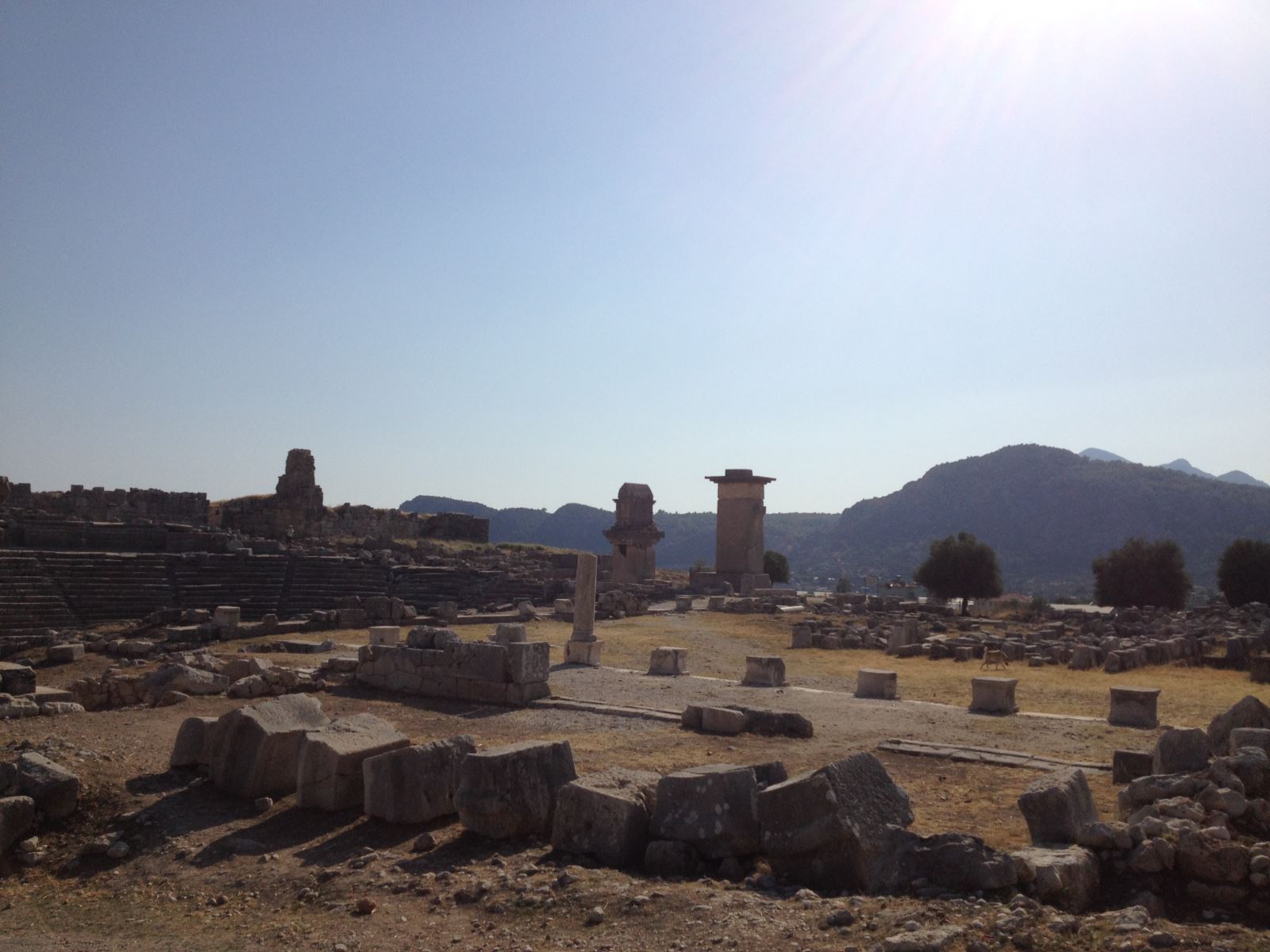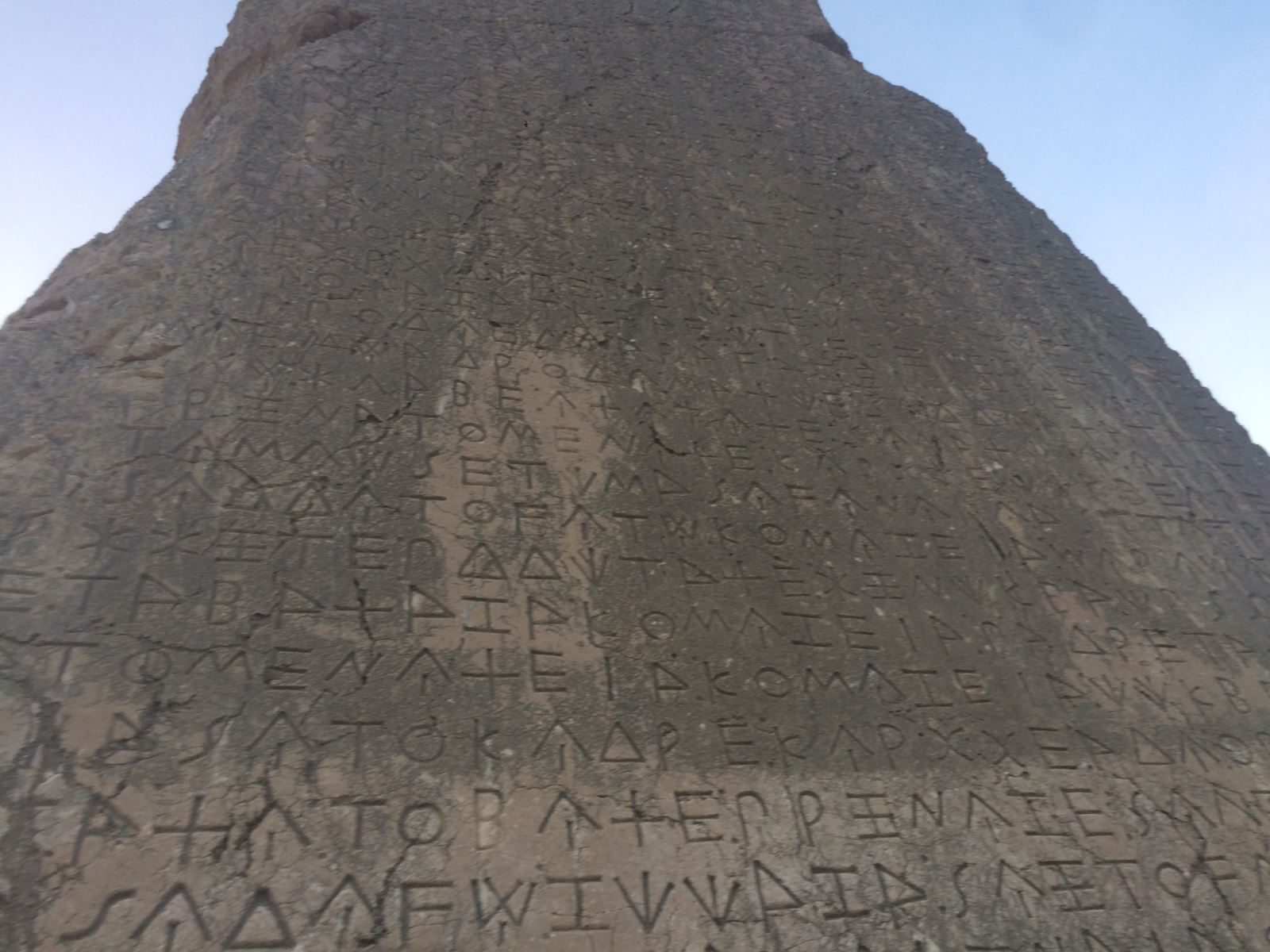General
 Xanthos
Xanthos
Despite many invasions throughout their history, the people of Xanthos maintained the characteristics of the Lycian culture, even at the cost of their lives - so we are told by a poem about the people of Xanthos, on an ancient tablet that was unearthed in the Xanthos excavations and translated by Azra Erhat.
The name of Xanthos, the largest and most important city of Lycian civilization, seems to be integrated with the history of Lycia. This honourable city in today's Kınık village on the Fethiye-Kaş highway, is famous for its historical revolts against tyranny and unjust plundering for centuries. Unfortunately in 1838 it was helpless against the historical plunder by Sir Charles Fellows for the British Museum. Despite the fact that hundreds of artefacts belonging to such a magnificent civilization were ruthlessly dismantled and relocated by sea thousands of miles away from their land, the remaining pieces are, nonetheless, one of the finest examples of Lycian civilization.
The first record of Xanthos dates back to around 540 BC when the Persian general Harpagos invaded western Asia. The general walked from Karya to the valley of Xanthos, where he encountered strong resistance from Lycia. Struggling against the supremacy of the enemy army, the people of the city gathered their wives, children, captives and all their property in the Acropolis, burned them and continued fighting until nobody was left alive. About 80 families who were not present during the war rebuilt the city of Xanthos.
After Persian domination, Xanthos was captured by B. Iskender, then passed to the Ptolemy dynasty in 309 BC and then to the third king of Antiochos of Syria. From the written record on the side of the north gate of the city '' King Antiochos the Great devotes the city to Leto, Apolo and Artemis'', it was understood that Antiochos, while understanding that he could not force the people of Xanthos, had chosen the path of agreement with them.
The city lived under the sovereignty of Rhodes (Rodos) for a short time, but in 42 BC Rhodes was occupied by Brutus, who came to Lycia to collect money and troops, while Rhodos was engaged in war with Marcus Antonius. The city people, who understood that they would not be able to endure any more at the end of a fierce battle that lasted for days, instead of surrender, set fire to the whole city, thus committing suicide for the second time in their history. When the city fell, when Brutus saw the body of the woman who had set fire to her house, hanging on the city square, with the body of her dead child in her lap, his eyes were filled with tears and he promised to his soldiers great rewards for every person of Xanthos that they could take alive. However, only 150 people of Xanthos after this great catastrophe could be captured alive.
Reconstructed with the support of the Lycian Empire, Xanthos continued to be the most famous of the Lycian cities during the Imperial period. During the Byzantine era, when the Vespasian arches, a new theatre, an agora, and many other structures were constructed, Xantos, was a centre of episcopacy, but in the 7th century BC, being weakened with by raids from the Arab world, its significance dimished.
When entering Xanthos, on the left is the city gate of the Hellenistic period and immediately above it there is the Emperor Vespasian's gate. The ruins on the right are the podium of the famous Nereid Monument, which was moved to the British Museum. The Lycian Acropolis is located in the southern part of the Roman theatre. The Acropolis, which was built in the 5th century BC, is surrounded by a wall formed by the processing of polygonal stones. The northern front of the wall belongs to the Byzantine period, and a monumental grave of 4 m height rises to the north-east. There is a large monastery, and a walled church with a lot of other historical remains around the Acropolis. There are two original and very-well preserved Lycian works in the west of the theatre.
The height of the famous Harpy monument in the north, together with the burial chamber and the cover, is 5,5 m. When the grave was first unearthed, it was understood that the bird-winged, female-headed figurines on the north and south fronts were the Harpies that gave the name of the monumental view, then it was understood that they were sirens carrying the souls of the dead to the gods.
Just south of the Harpy monument is the Lycian tomb monument, which was built on a high pedestal in the 3rd century BC. This monument in the form of pillar tomb is not monolithic, the inside of it was left empty and it is formed from overlaid slices. A little further to the south there are the third grave remains which resemble a tower with a grave chamber, which is thought to remain from the earliest periods of the empire.

On a vast area in the east of the Agora, which was used as a market square during the Hellenistic and Roman period, is the base of the Byzantine basilica, and sarcophagus decorated with reliefs of a lion and remains of a Pavaya sarcophagus, whose reliefs are now in the British Museum.
You will probably agree that it is not possible to fit the history of such a broad civilization into a few limited pages.
Besides the major historical monuments which we have tried to outline above, you can also visit a large part of the Xanthos city ruins, which spans a very wide area, at the British Museum.

